1lumen selects and reviews products personally. We may earn affiliate commissions through our links, which help support our testing.
Nitecore P20iX review
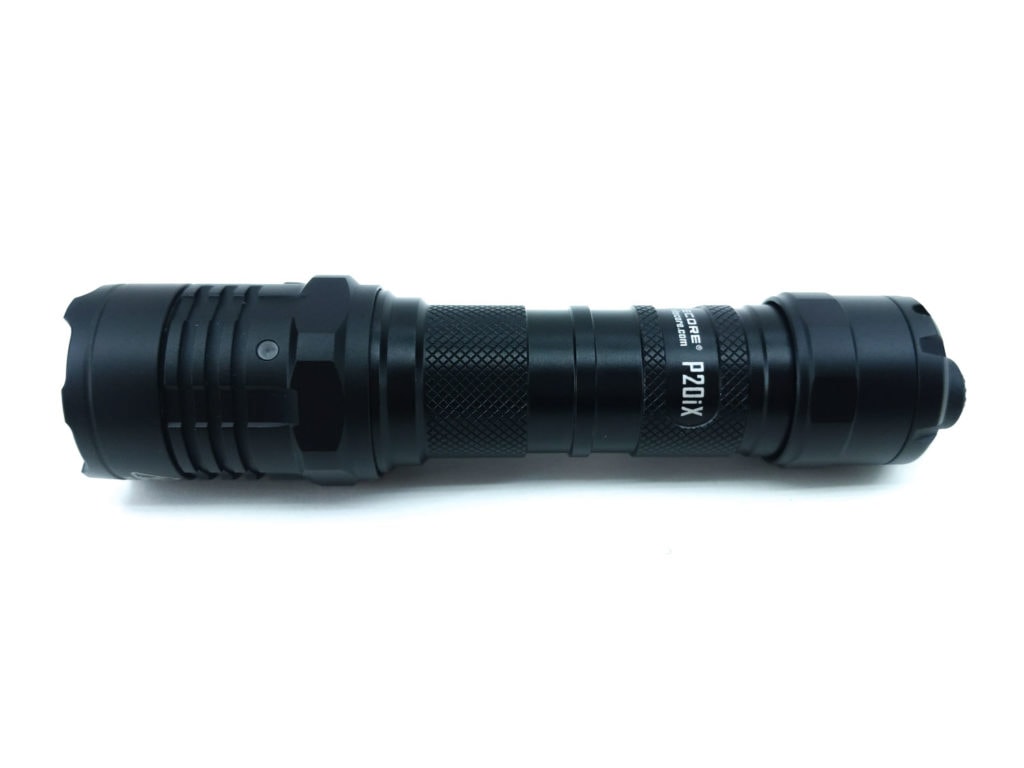
Nitecore P20iX specifications
| Brand/model | Nitecore P20iX |
|---|---|
| Category | Tactical flashlight |
| LED | 4* Cree XP-L2 V6 |
| Lumens | 4,000 lm |
| Beam intensity | 12,200 cd |
| Battery config. | 1*21700 / 2*CR123 |
| Material | Aluminum |
| Modes | 6 |
| Blinkies | Strobe |
| Reflector | Smooth |
| Waterproof | IP68 |
| Review date | June 2021 |
Introduction:
Nitecore is no stranger to the flashlight market. They’ve been producing robust, high quality lights for at least 14 years. They have a very wide portfolio that they segment into different series: MH (Multi-task Hybrid), P (Precise), TM (Tiny Monster), T (products like the Tube, Tip, Tini, and Tiki), and so forth. My first ever high-output flashlight was Nitecore’s P12GT: a 1000 lumen throwy tube light. This first impression with Nitecore certainly didn’t disappoint.
Up for review is a brand new entry in Nitecore’s Precise lineup: the P20iX. For those trying to keep the numbers and letters straight, this is an upgrade to the P20 lights. The “i” indicates that this uses Nitecore’s unique i-Series battery (more on that later). The “X” signifies that this P20iX has “Xtreme Performance”. Sounds good, but we’ll see about that!
Package
The Nitecore P20iX arrived in a sturdy and attractive looking two-piece box. It was lined with dense foam with a just-right cutout for the flashlight. It may not be the fanciest packaging I’ve seen, but it’s very nicely done. Inside the box was:
- Nitecore P20iX
- 21700i battery (NL2150HPi)
- Spare o-ring
- Lanyard
- Pocket clip
- Tactical holster (NTH20)
- USB-A to USB-C charging cable
- 2*CR123 adapter
- Manual
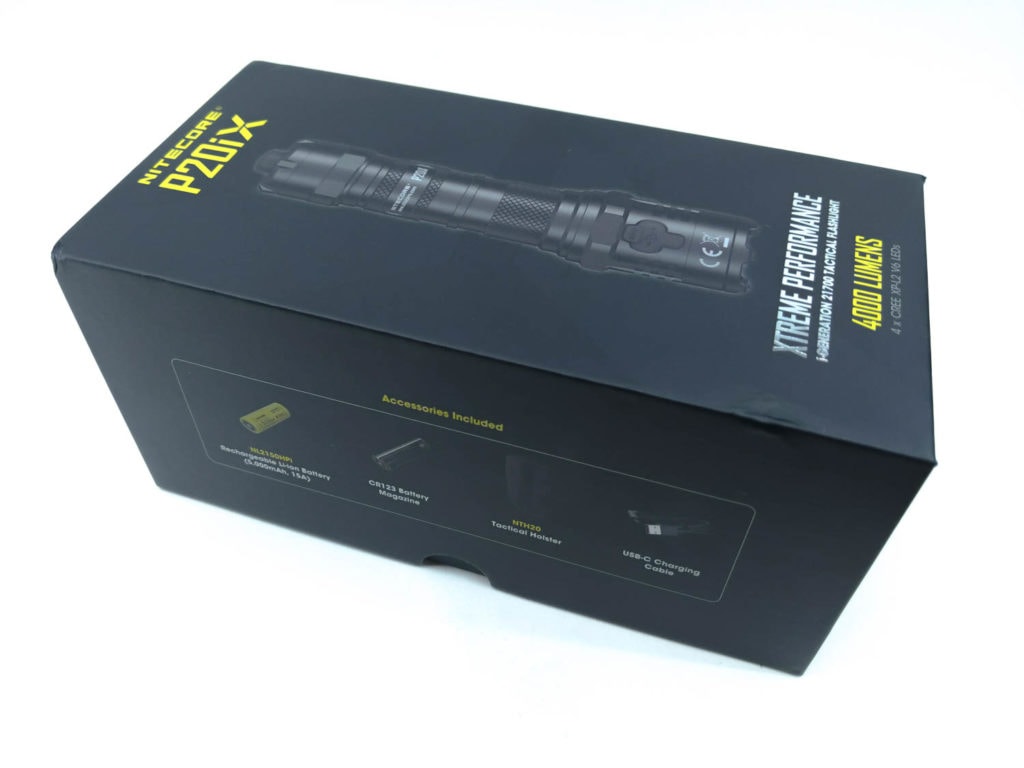
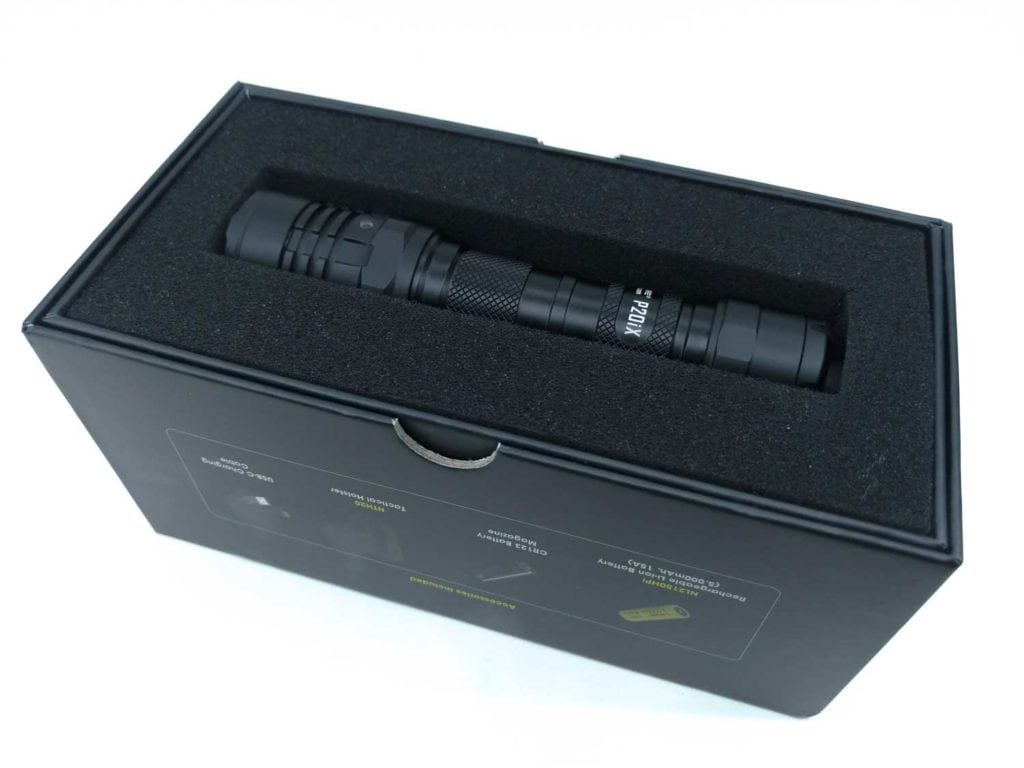
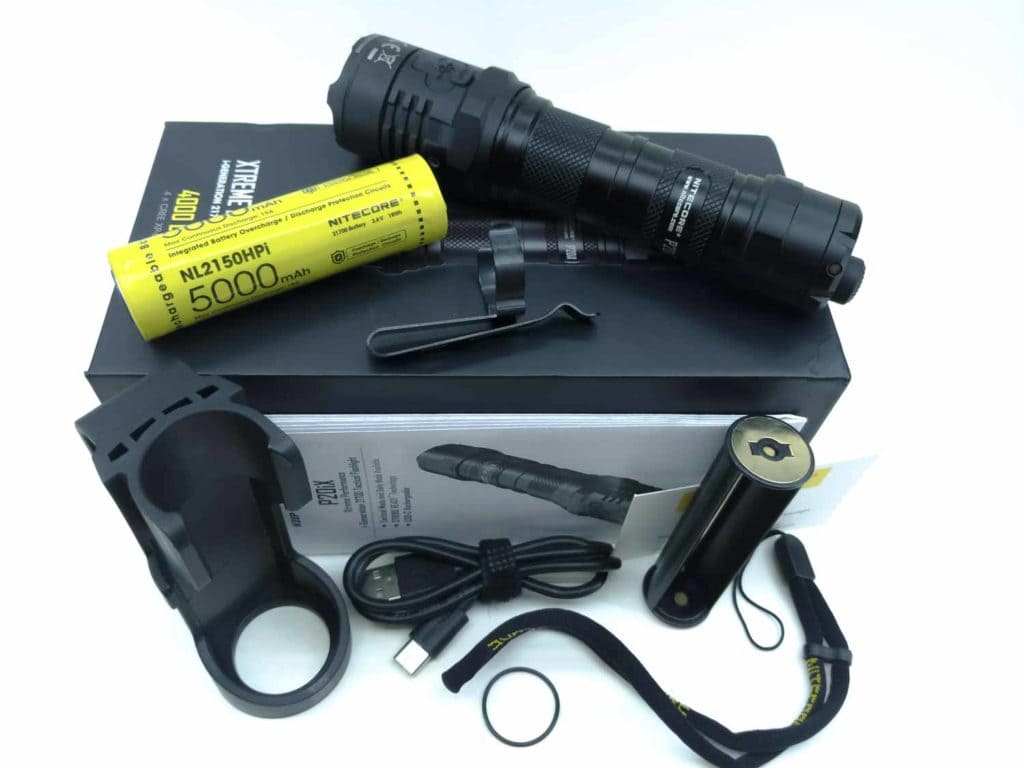
Flashlight in use
The more and more I use 21700-based flashlights, the more I’m convinced that it’s about the perfect size (at least for my hands) in terms of grip-ability. Most 18650 lights, while pocket friendly, can almost be too slender, while 26650 lights are generally pretty chunky. That is to say, I feel like the Nitecore P20iX is a very comfortable size. The body is pretty smooth overall, but has plenty of rings and cutouts and such and provide good traction.
There are flat spots around the head in a hexagon pattern that keeps the light from rolling around. The power switch on the tailcap (a forward clicky) protrudes generously. This makes it easy to activate, but of course means there’s no tailstanding. There’s a second switch in the tailcap that sits flush, referred to as the STROBE READY mode select button.
The Nitecore NTH20 Tactical Holster is included. It’s designed to fit on various belt sizes between 1 ¼” to 2 ¼” as well as being compatible with the MOLLE system. The holster feels nice and sturdy and seems to function very well, allowing quick and easy removal of the flashlight. The other included accessories are a bit more lackluster. The clip holds on firmly enough, but the bend radius that clamps against the flashlight appears to be suitable for a considerably thinner light and so it doesn’t clip on cleanly. The included lanyard is pretty standard, but I can’t figure out where to put it unless you cinch it down to the pocket clip. This arrangement seems unusual to me, but installing the lanyard on the clip is exactly what Nitecore had in mind.
In addition to the included accessories, Nitecore offers several other products that are compatible with the P20iX, such as the:
- NTR10 Tactical Ring Pro
- TSL10i Signal Light
- RSW2i USB-C Remote Switch
- Multiple gun mounts
- Multiple diffusers
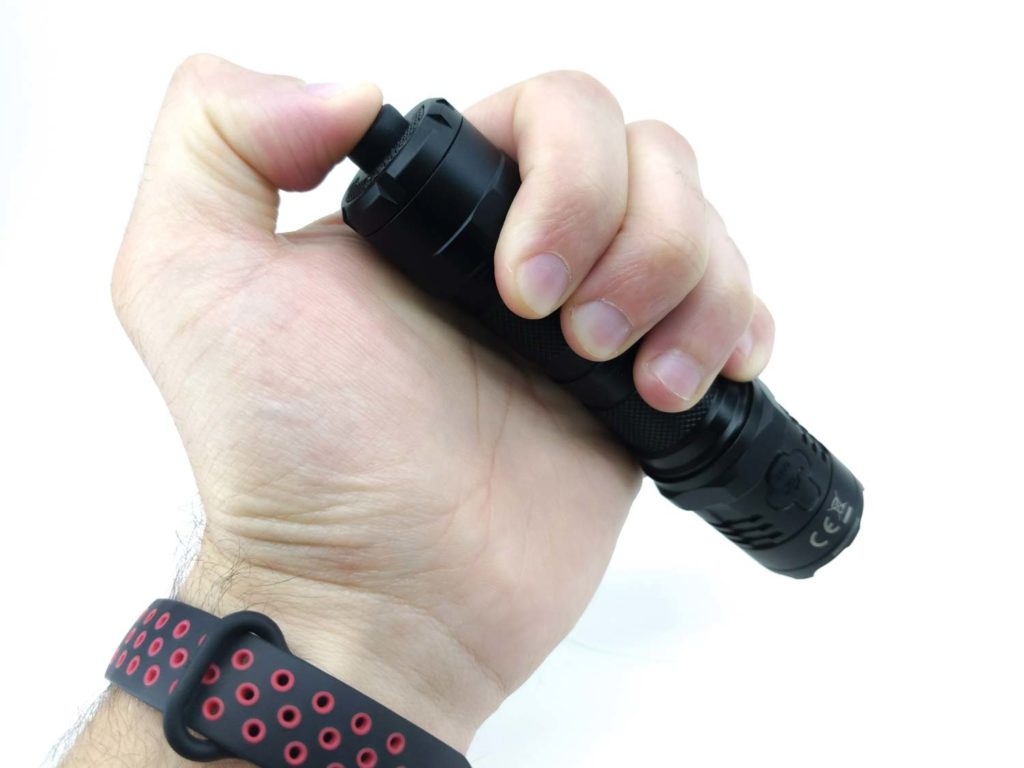
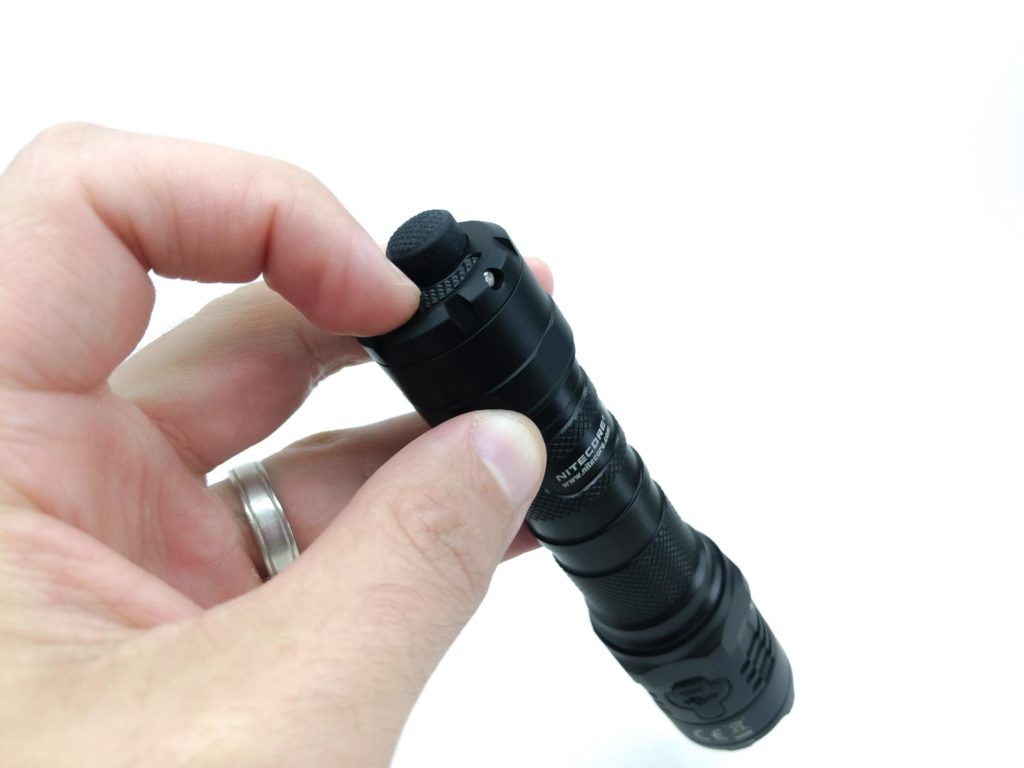
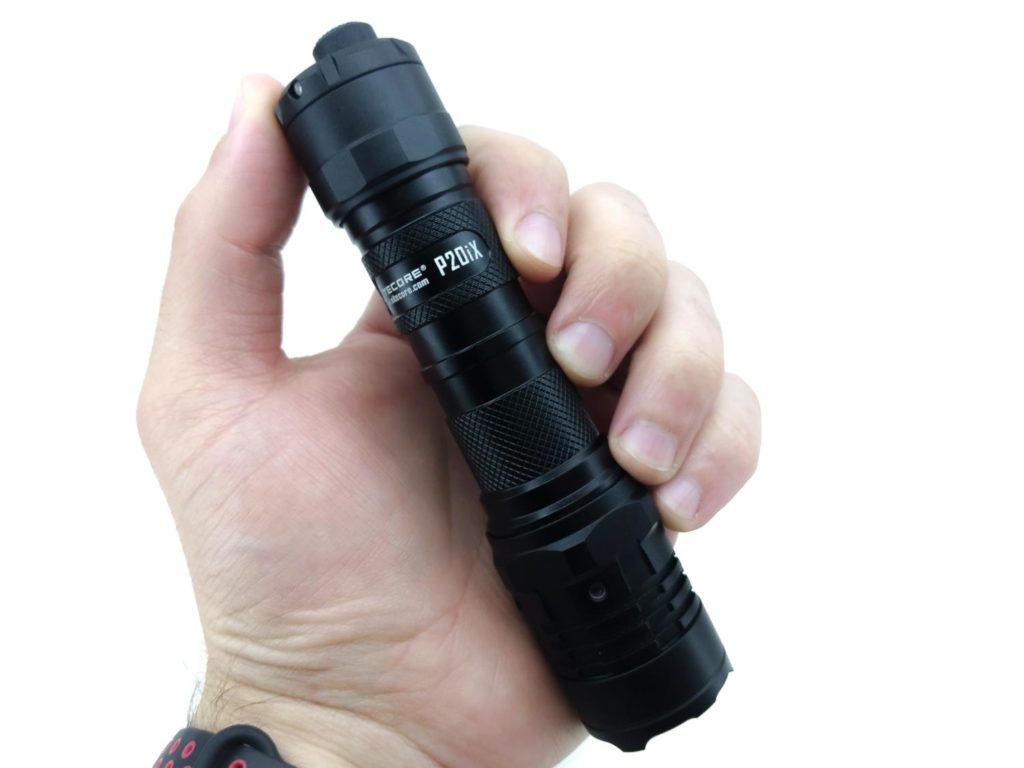
Build Quality, and Warranty
Nitecore is very consistent when it comes to design, materials, and overall build. Outside of a few exceptions, you know that you’re going to get top-notch HAIII anodized aluminum (in black of course, is there anything else?) and a solid construction. The P20iX falls right in line with this and feels very rugged. The finish is excellent, and installing and removing the pocket clip left no marks. The threads are nice and smooth. Even the USB-C port cover is designed to seal tightly and sits flush with the light, it doesn’t get in the way or get caught up or anything. Nitecore has given it an impact resistance rating of 2 meters. The attention to detail is great.
As far as warranty goes, Nitecore has your back with three levels of guarantee:
- Exchange and DOA/defective products locally within 15 days of purchase
- Defective / malfunctioning products will be repaired free of charge for 60 months
- Beyond 60 months, Nitecore will cover the cost of the labor and the end user is responsible for the cost of the parts
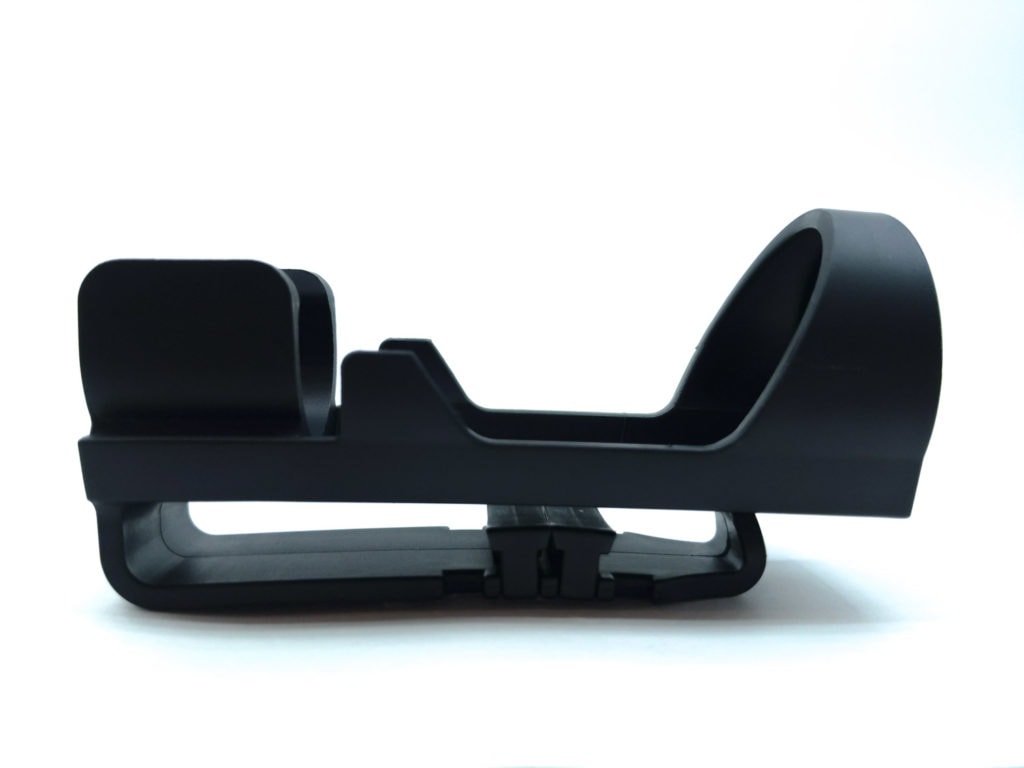
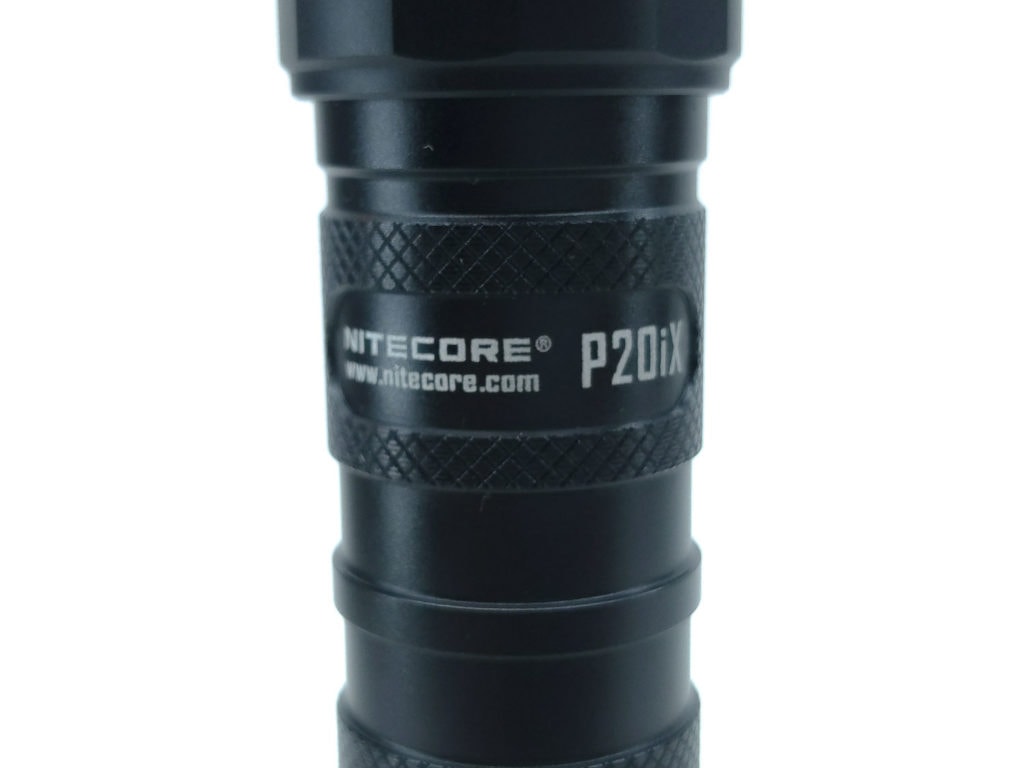
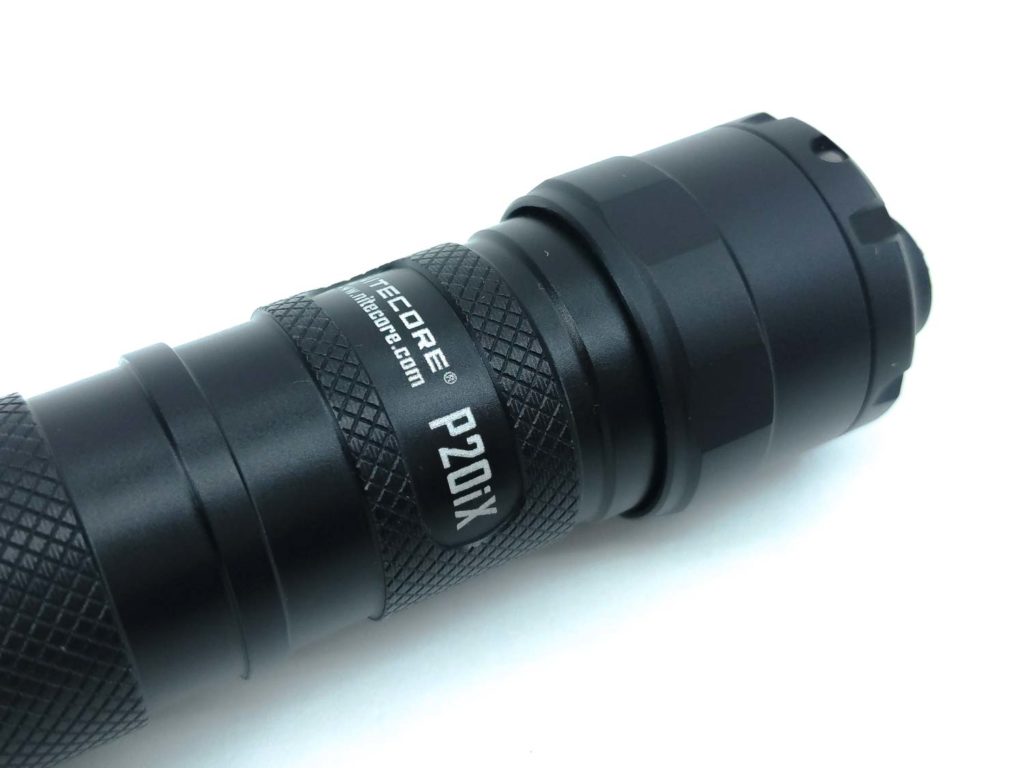
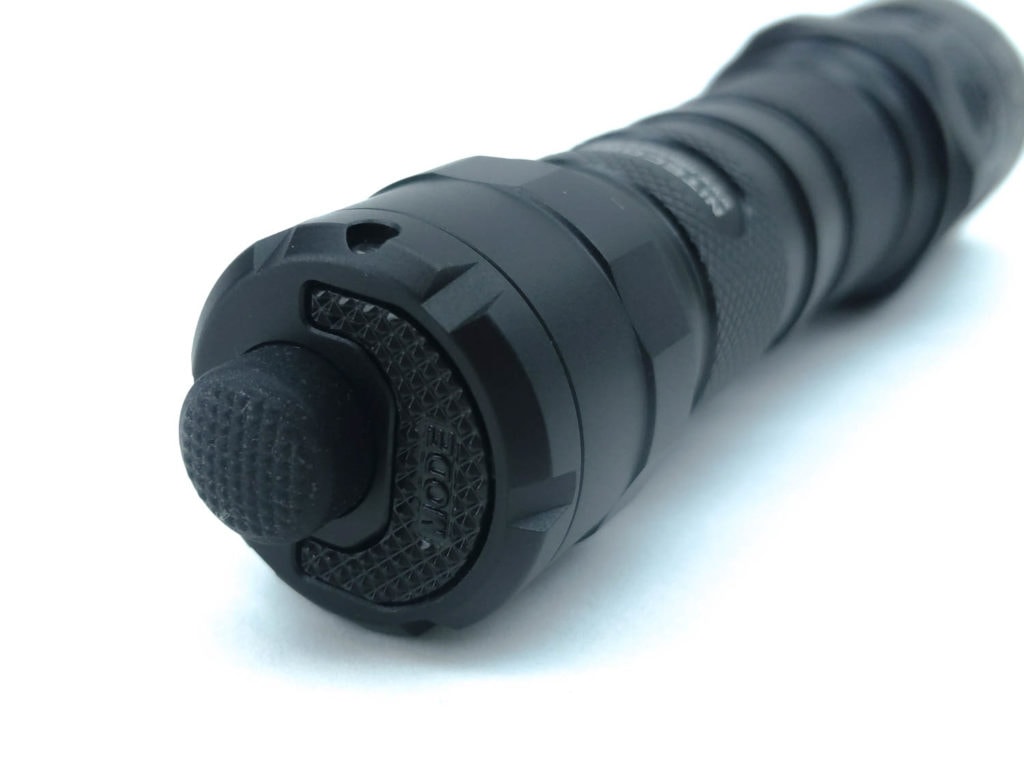
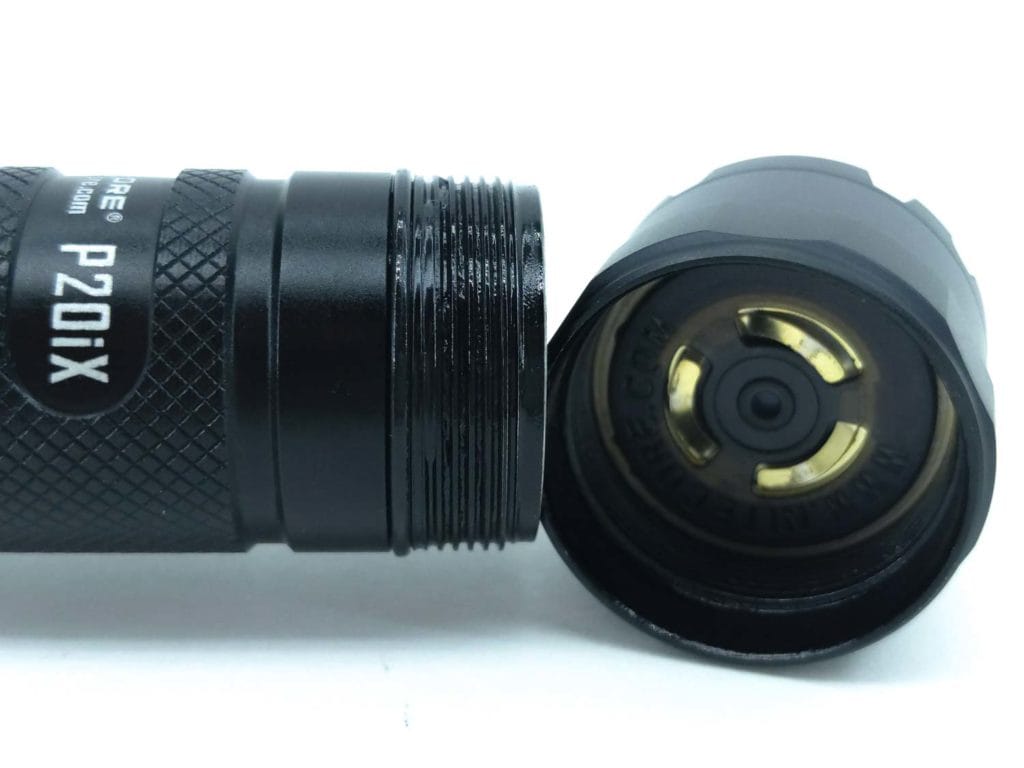
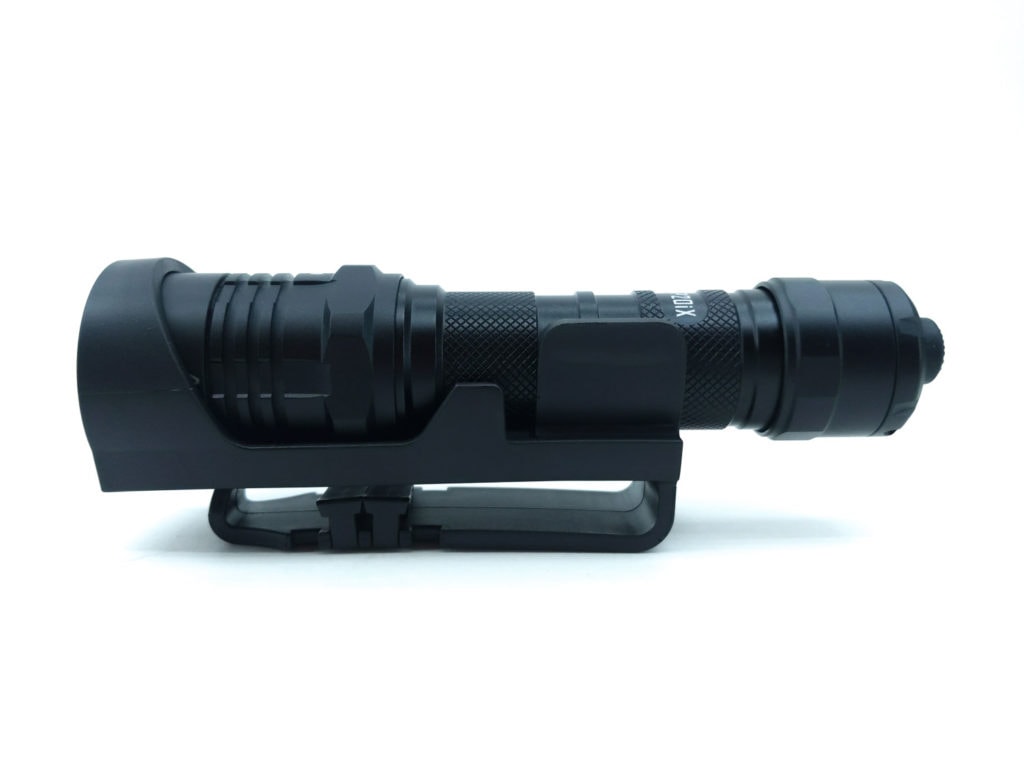
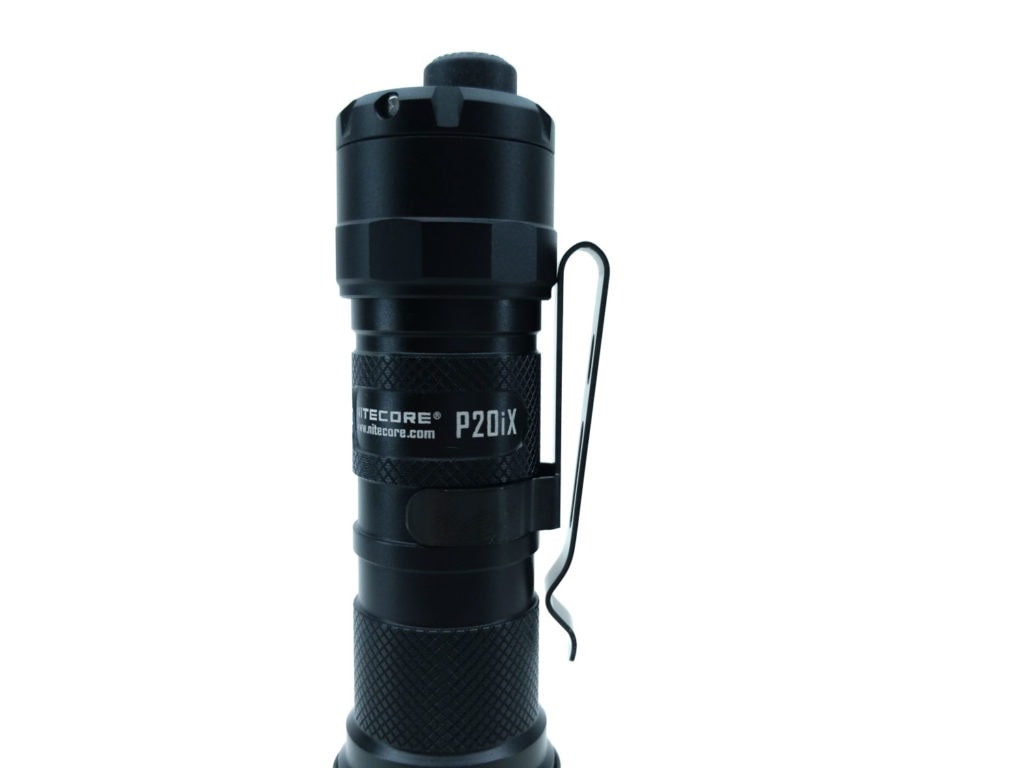
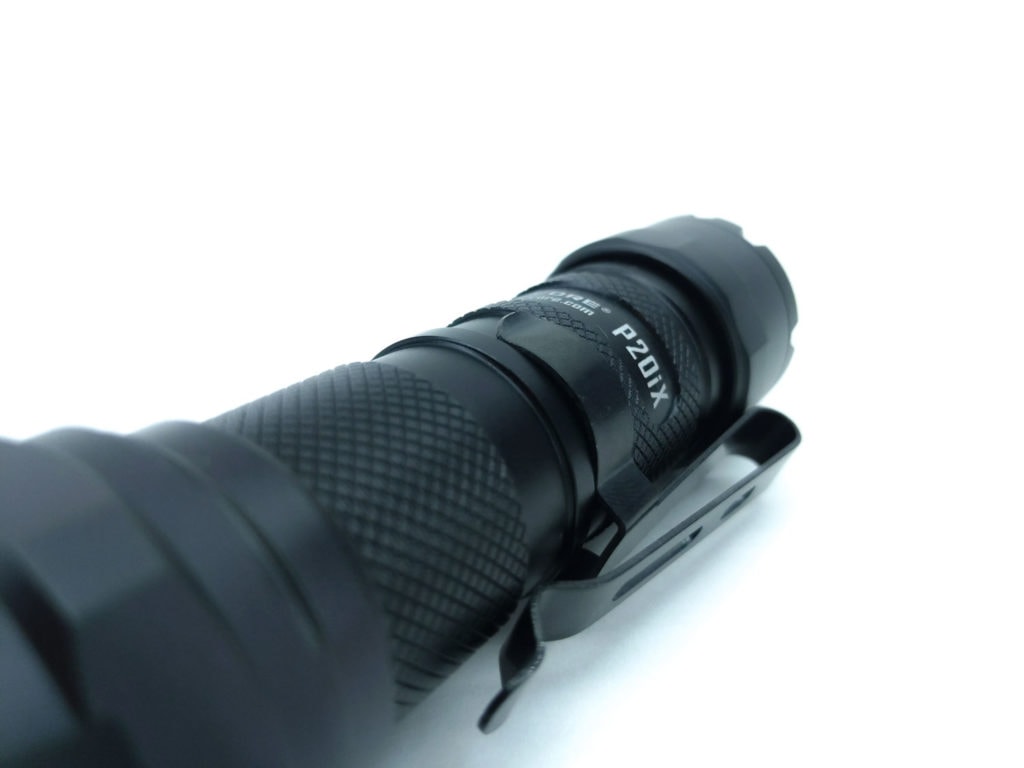
LED, Lens, Bezel, and Reflector
Many multi-emitter LED lights I see (especially small-medium ones) use TIR optics. Not so with the P20iX; it utilizes a smooth clover-leaf shaped reflector. Like many of their reflectors, Nitecores describes them as using “Precision Digital Optics Technology (PDOT)”. I can’t say exactly what that means for this light, but Nitecore says it means they pay close attention to the design of their reflectors. And I tend to agree that they produce a very usable beam.
Perfectly situated in the center of each opening is a Cree XP-L2 V6 LED. That “V6” is the output bin, meaning these are some of the brightest XP-L2’s available. Nitecore hasn’t stated a particular CCT for this light, but unless otherwise specified they generally use 6000K – 6500K LEDs. While that may not be everyone’s favorite CCT, it lines up with the general consensus for preferred temperature of their target market: law enforcement, patrol workers, search and rescue, etc.
This isn’t a secret, but the XP-L2 is one of Cree’s new “flip-chip” LEDs. These are very efficient, but are infamous for their tint shift (different colors visible in different areas of the beam). There’s no miracle going on here, I certainly see the cool white hotspot, surrounded by a greenish corona. It’s pretty okay outside, but it doesn’t look great on white walls. While there is somewhat of a hotspot, the 4 LEDs in their tiny reflector provide a very wide (floody) beam.
The LEDs and reflector are protected by a sheet of AR-coated glass. That arrangement is housed beneath a strike bezel, which is a bit unique. Instead of relying on highly aggressive crenulations to form the strike bezel, Nitecore has embedded beads of high strength silicon nitride ceramics in a mildly crenulated bezel. The result of that is you’ve got a business-end that should have no trouble safely breaking glass, but is also smooth enough that it’s not going to tear up your pocket.

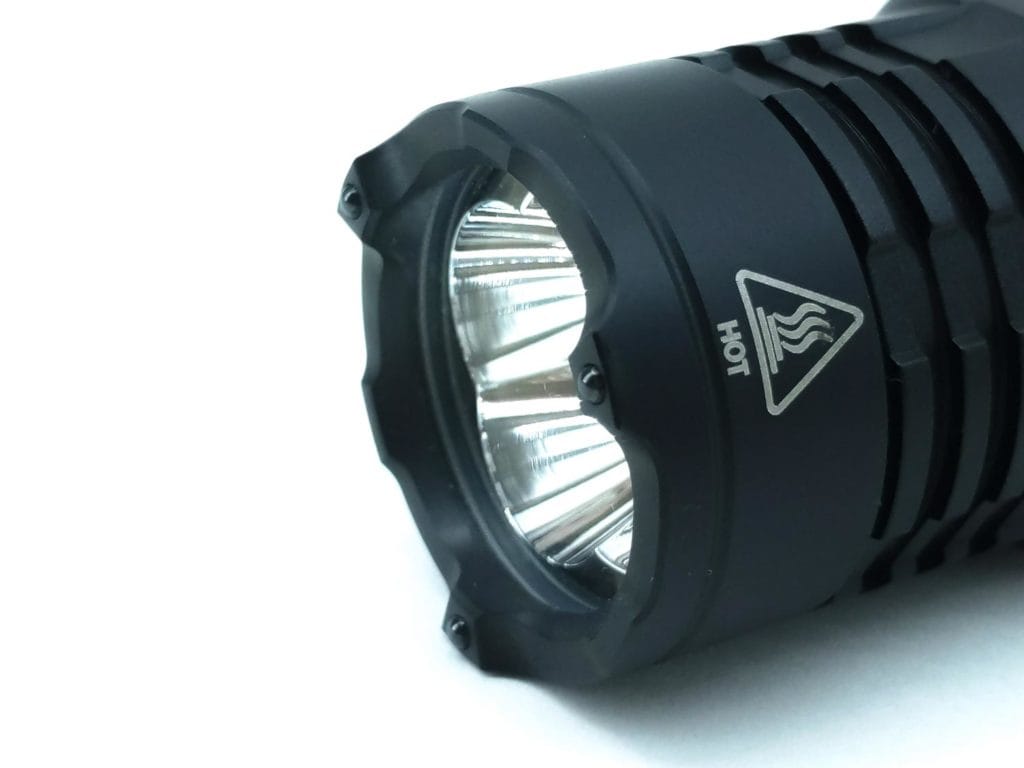
Dimensions and size comparison
- Length: 141.5 mm / 5.57 in
- Head diameter: 31.8 mm / 1.25 in
- Body diameter: 25.4 mm / 1.00 in
Weight:
- With cells: 192 g / 6.7 oz
- Without cells: 116 g / 4.1 oz
Popular Flashlights size comparison
Nitecore brothers, from left to right: Nitecore P20i UV, Nitecore P20iX
Common 21700 flashlights, from left to right: Amutorch E3, Sofirn IF25A, Nitecore P20iX, Wuben TO50R, Sofirn SP35
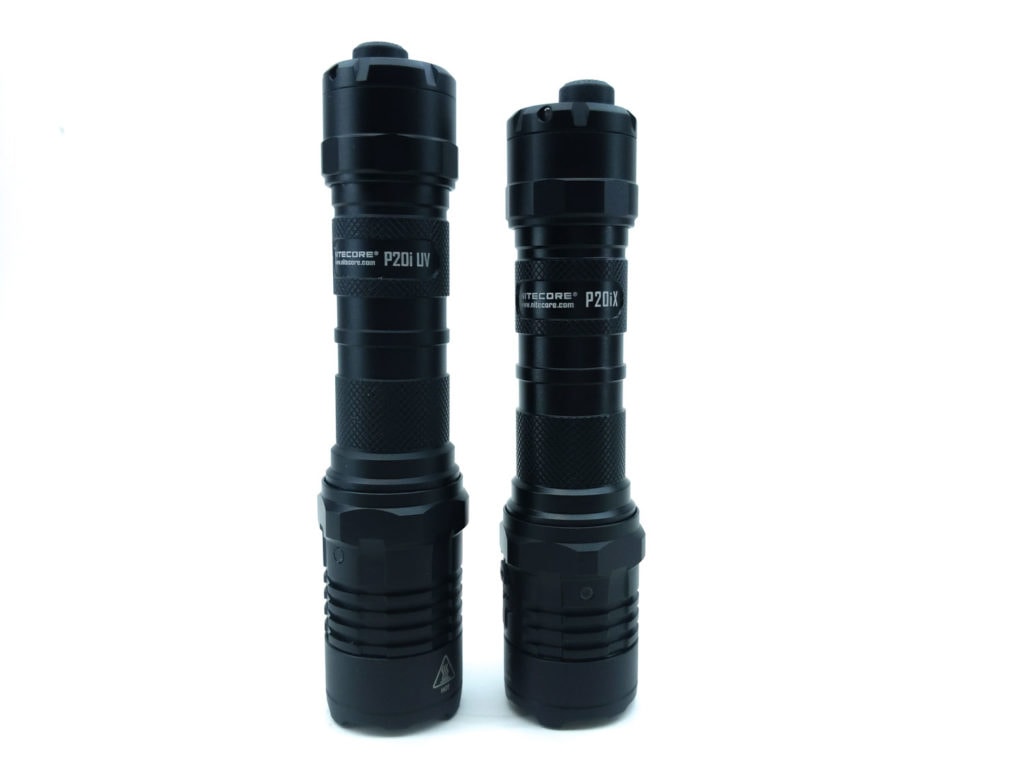
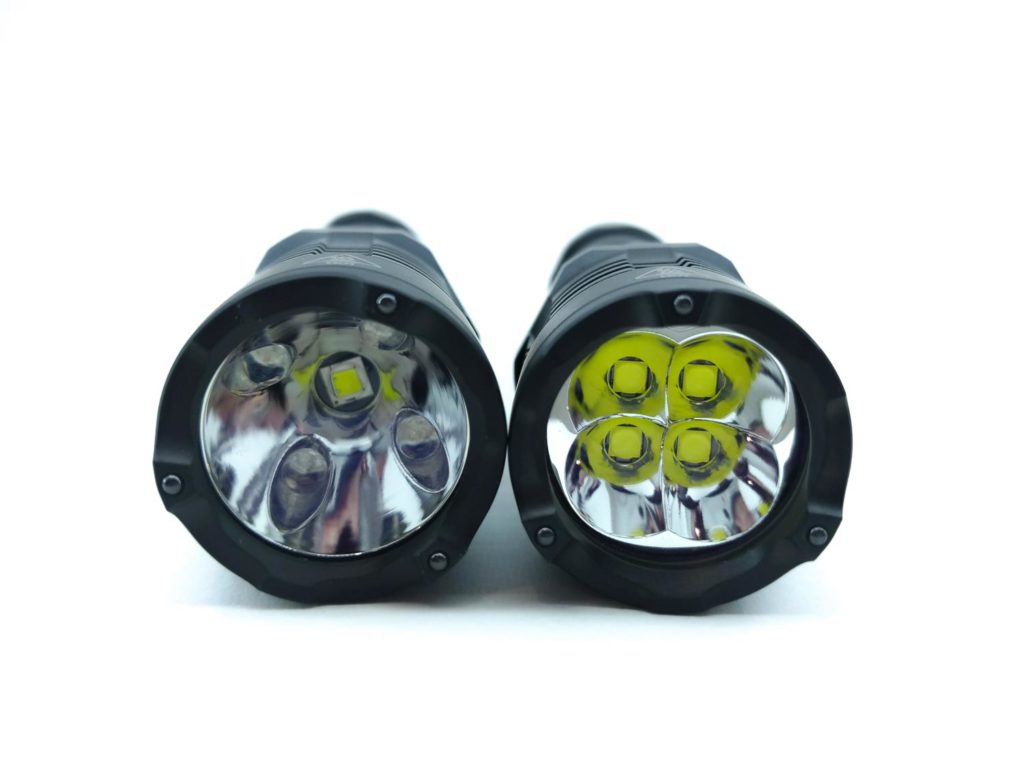
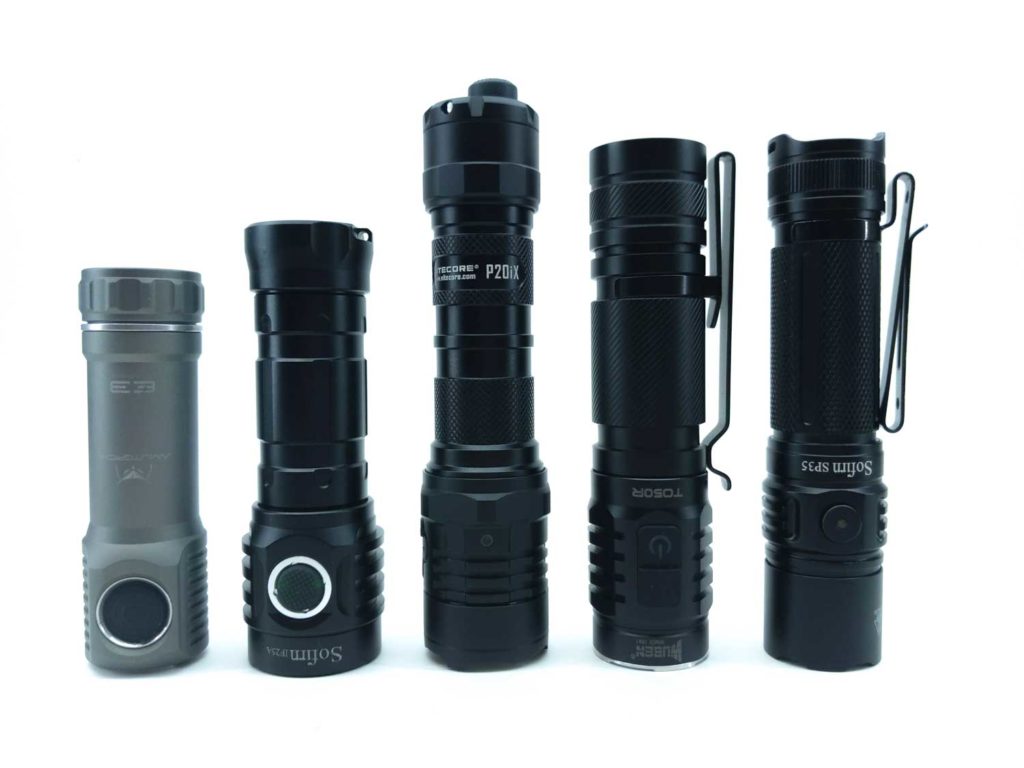
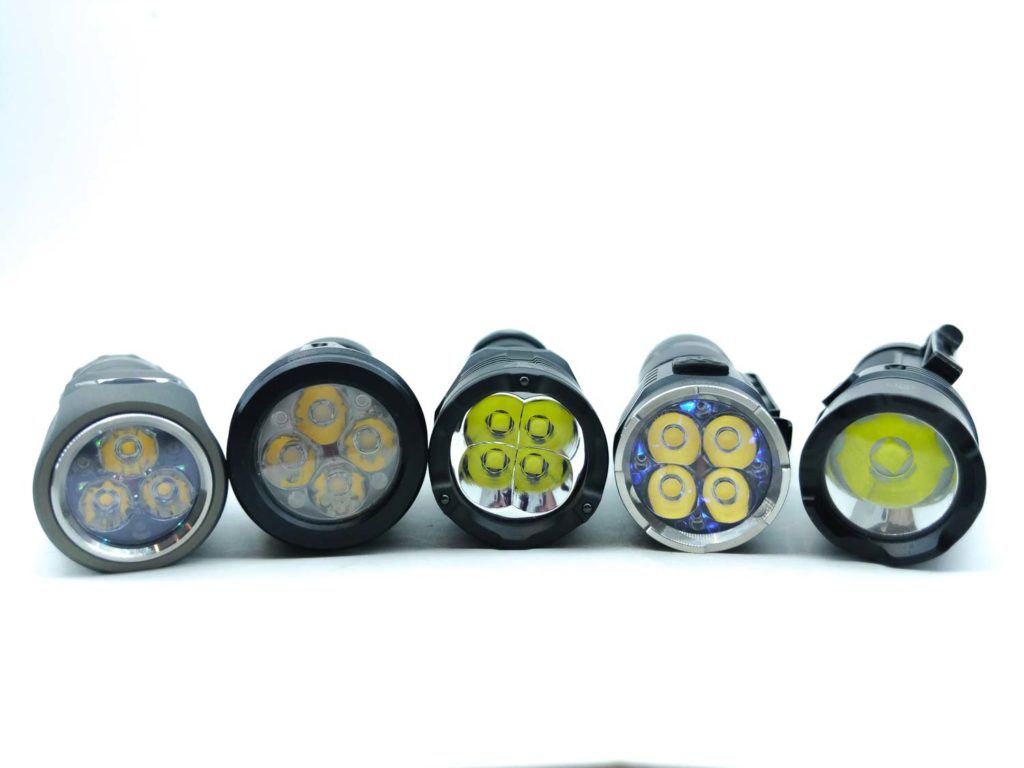
Driver & User Interface:
I feel like Nitecore made a great decision with the UI. There are two distinct UIs that you can choose from: Daily-Mode and Tactical-Mode.
Switch between daily mode and tactical mode:
Switching between them is also very easy, while not being something you’d accidentally do. So how do you do it? Glad you asked. Just unscrew the tailcap a little bit when holding down the Mode button. The light will blink at you, confirming the change. Then just tighten the tailcap back down.
Daily Mode has 6 brightness levels plus Strobe. It cycles from low to high and has memory. Turbo cannot be memorized. In contrast, Tactical Mode has 4 brightness levels plus strobe. It cycles from high to low and does not use memory; the light always comes back on in Turbo (or Strobe via the Strobe Ready button).
Modes: Ultra-Low, Low, Mid, High, Higher, Turbo, Strobe
Daily Mode, From OFF:
- Power button, Half press: momentary on
- Power button, Single click: on in last used mode
- Mode button, Press and Hold: momentary Strobe
Daily Mode, From ON:
- Power button, Single click: turns off
- Mode button, Press and Hold: momentary Turbo
- Mode button, Single click: go to next mode
- Mode button, Triple click: Strobe mode
Tactical Mode, From OFF:
- Power button, Half press: momentary Turbo
- Power button, Single click: on in Turbo (no memory)
- Mode button, Press and Hold: momentary Strobe
Tactical Mode, From ON:
- Power button, Single click: turns off
- Mode button, Single click: go to next (lower) mode
- Mode button, Long press: Strobe mode
Mode memory:
- Daily Mode uses memory, Tactical Mode does not
Short cuts:
- To Turbo: In Tactical mode (only), the Power button goes right to Turbo
- To Strobe: from Off, the Mode button activates Momentary Strobe
- No other real shortcuts (though a shortcut to ultra-low would have been nice)
Low voltage warning:
- There is a power indicator LED on the side of the head that remains lit while the flashlight is on to read out the voltage range
Strobe/blinkies
- Strobe mode only
Lock-out mode:
- No documented lockout besides physical lockout
PWM
- PWM is not present in any mode. I used a photodiode circuit and my DMM’s Hz setting to verify.
Additional info: The P20iX employs Nitecore’s ATR (advanced temperature regulation) control scheme. In testing, it did a flawless job of keeping the flashlight under 60°C.
Batteries & Charging
The Nitecore P20iX takes a 21700i battery. Note that little “i” there? That’s important. The P20iX won’t take just any 21700. It needs to be Nitecore’s i-Series 21700 cell. While some proprietary cells I’ve seen recently have Neg ring around the Pos terminal, Nitecore takes it a step further: they do this at both ends of the cell. Kinda slick. But also very unique, very proprietary.
That said, if you’re in a pinch, Nitecore included a 2*CR123 adapter that you can use instead. Just know that you’re going to lose both Higher and Turbo modes. The highest claimed output using 2*CR123 is 1060 lumens.
The P20iX has built-in USB-C charging. It’s great to see USB-C finally taking over on charging ports. And while the P20iX ships with a USB-A to USB-C cable, it is compatible with USB Power Delivery (USB-C to USB-C) chargers. In testing, I observed a charge rate around 1.95A at 5.1V for 9.92 watts. Charging took 3 hours and 59 minutes.
I was able to carefully orient the Nitecore battery in my Vapcell S4+ charger. It fit just fine and charged as expected. If you try this, make sure you don’t short out the battery contacts on the charger contacts.
There’s a power indicator LED on the side of the head. While the flashlight is on, it’ll shine steady when the battery is above 50%. It’ll flash slowly below 50% and flash rapidly below 10%. But wait, there’s more! When you insert the battery or remove the charging cable, the power indicator LED will blink out the actual voltage just like what you’d see with Anduril (firmware found in other popular flashlights). For a 4.2V battery, it’ll blink 4 times, pause, and blink 2 times. Nice!
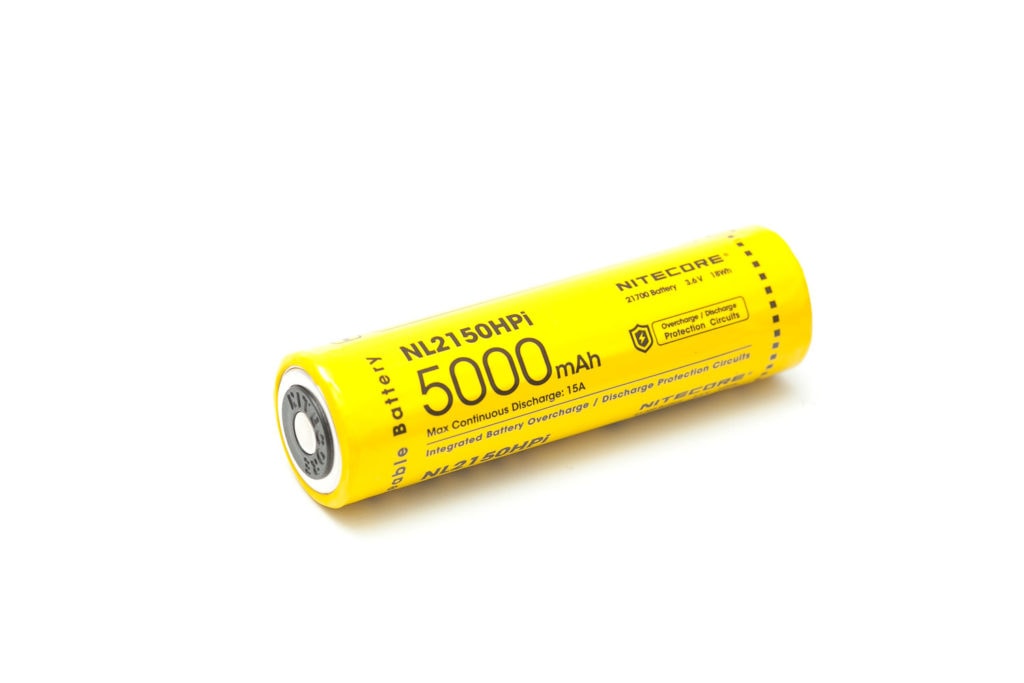
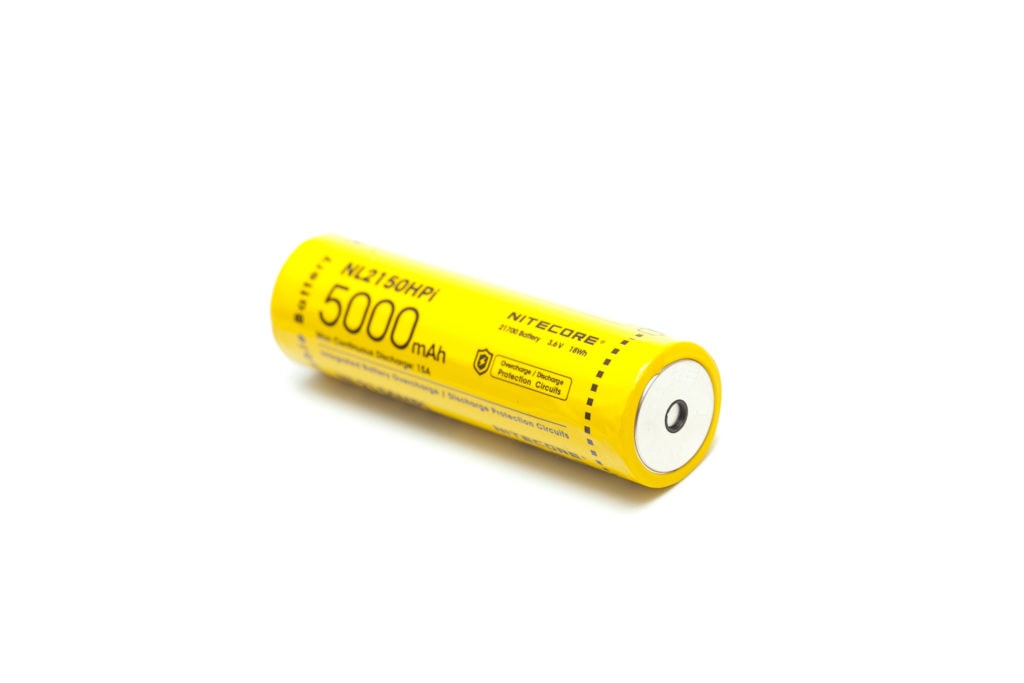
Performance
Lux was measured by a UNI-T UT383 BT at 10 meters. Lumens were measured in a homemade lumen tube using a TSL2591 sensor, calibrated with a Maukka calibration light. Testing was performed with the included battery.
Runtime graph
I ran full runtime tests on the brightest 4 of the 6 modes (the other two would take a very long time and be quite boring).

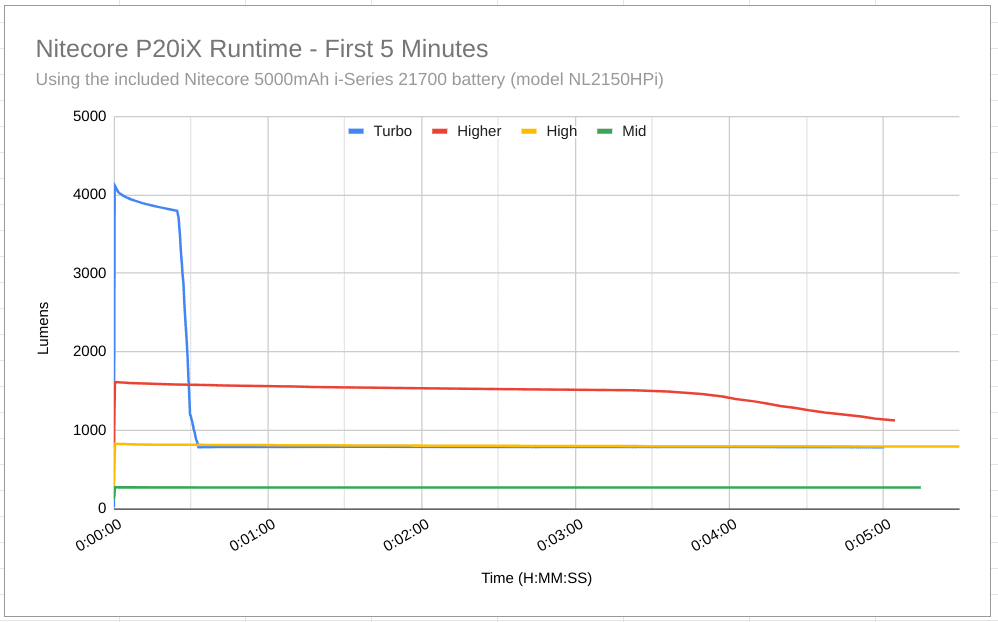
In Daily Mode, Turbo is only momentary. So flipped over to Tactical Mode to run the Turbo test. It started out at 4119 lumens, but quickly started stepping down just before 30 seconds. It dropped to around 787 lumens and stayed around there, being controlled by the ATR to stay just under 60°C. The ATR was rock solid in this and all of the other tests. I measured 1342 lumens at 30 seconds, so the ANSI runtime actually stops when the light drops below 134 lumens (10% of the 30 second reading). So the runtime was 2 hours and 41 minutes.
The “Higher” mode was pretty similar to Turbo, it just started out a little less bright and took longer to step down. It started out at 1616 lumens and was at 1582 at 30 seconds. It began ramping down around 4 minutes and settled in around 707 lumens. It took 2 hours and 34 minutes to reach 10%.
High mode started out at 830 lumens and didn’t deviate too much throughout the course of the runtime. Output at 30 seconds was 817 lumens and it took 2 hours and 45 minutes to reach 10%.
Mid mode started out at 276 lumens and was at 274 at the 30 seconds mark. It crossed the 10% threshold at 8 hours and 24 minutes.
Lumen measurements (for each mode)
- Ultra-Low: 1.3 lm
- Low: 35 lm
- Mid: 276 lm
- High: 830 lm
- Higher: 1616 lm
- Turbo @ 0 sec: 4119 lm
- Turbo @ 30 sec: 1342 lm
- Turbo @ 10 min: 780 lm
Throw numbers:
- Turbo: 16,000 cd = 253 m / 277 yd
- Higher: 6,400 cd = 160 m / 175 yd
Beamshots
- Beam shots of the building are taken at 15 m (16 yd) using a Pixel 3 set to ISO 200 with 1/10 second exposure time
- Beam shots of the playset are taken at 30 m (33 yd) using a Pixel 3 set to ISO 200 with 1/2 second exposure time. The trees in the background are around 65 m away.
- Nitecore P20iX
- Sofirn IF25A (SST-20 4000K)
- Meote FM1 (LH351D 5000K)
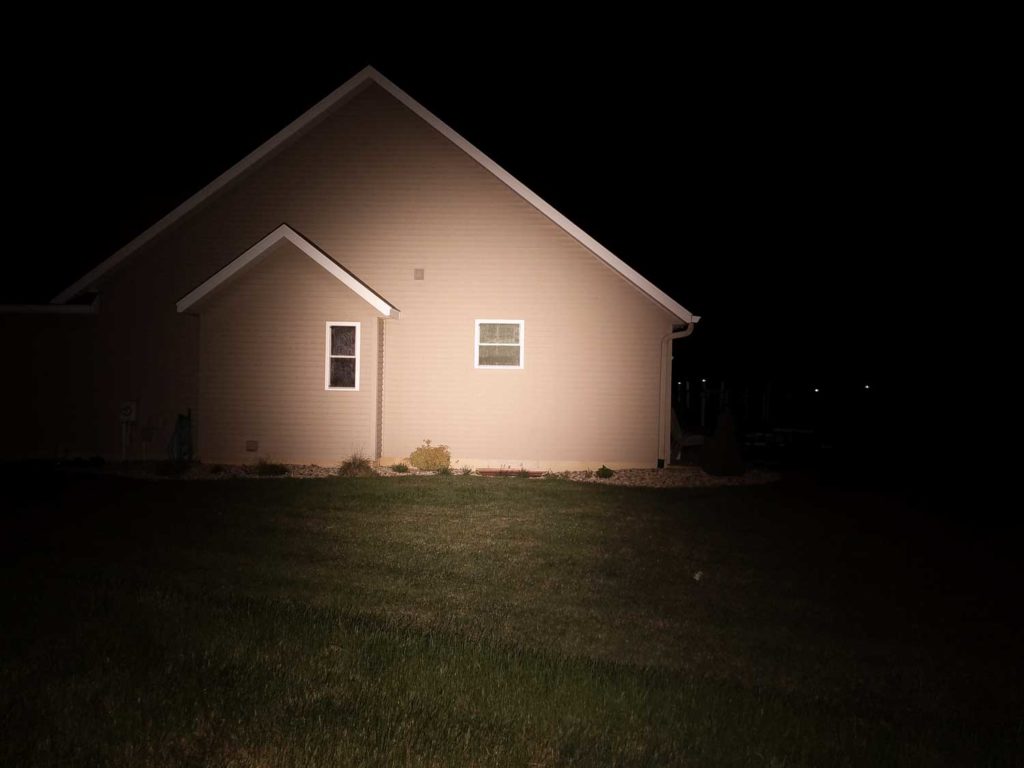

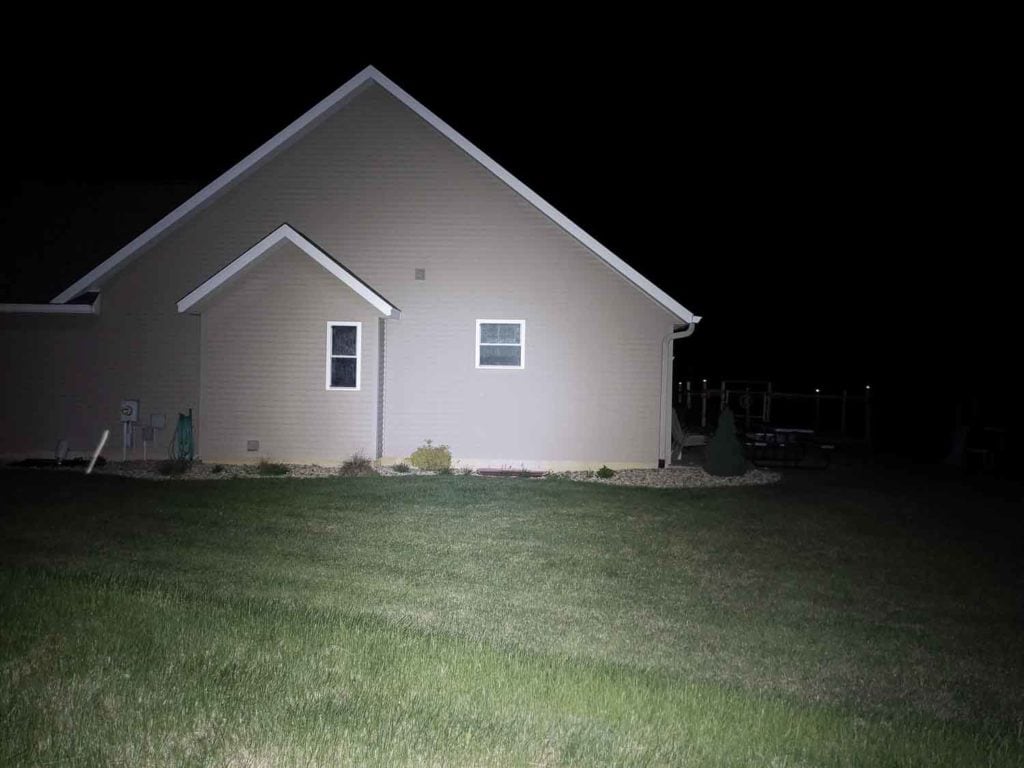

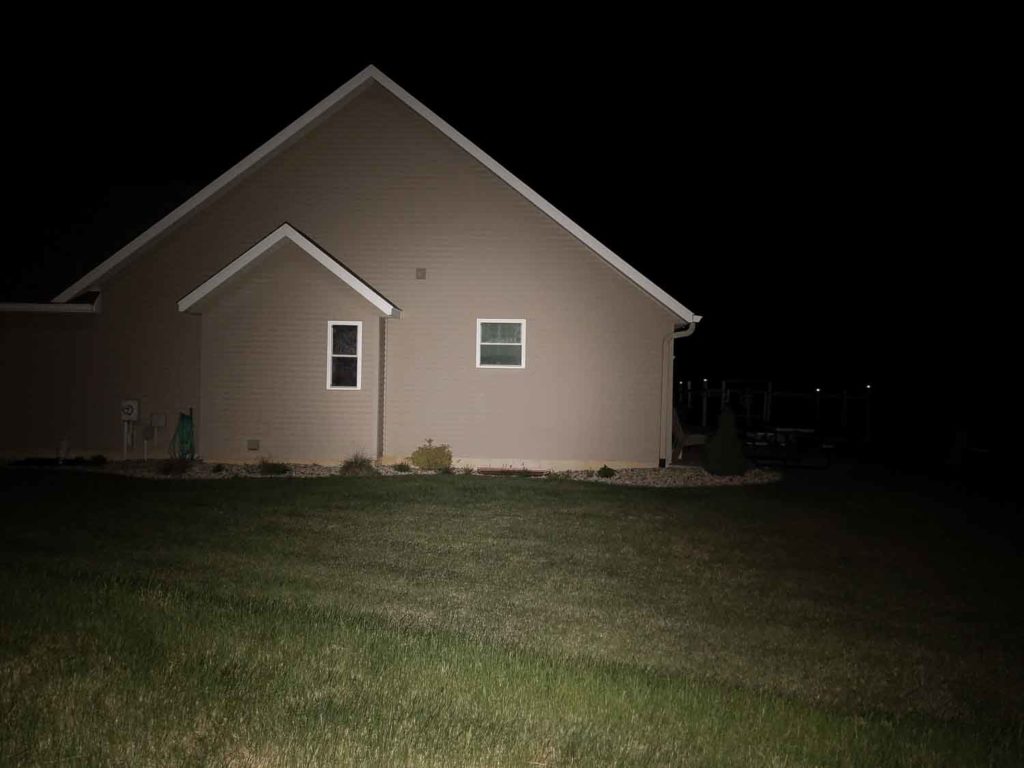

Disclaimer: This flashlight was sent to me for review at no cost by Nitecore. I have not been paid to review, nor have I been holding back on problems or defects.
Final Verdict
Pros
- Solidly built
- Very bright (for a few seconds a least)
- Two UI choices
- USB-C charging
- Great kit and available accessories
Cons
- Turbo is limited
- Cree tint shift
- Questionable clip and lanyard
- Proprietary battery
- No shortcut to low
Explanation on star ratings:
1: Avoid: my phone flashlight would be a better choice – 2: Poor: significant defect or issues, much better options available at the same price – 3: Average: some defects or issues – 4: Good: recommended (minor issues) – 5: Great: highly recommended

5 stars: ★★★★★
In the tactical / mixed use realm in which the P20iX competes, it is a solid contender. It has Nitecore’s proven build quality. With all of the included items and available accessories, it’s very versatile. Turbo is really bright, but in Daily mode it’s only a momentary mode and Tactical’s Turbo lasts about 30 seconds. That aside, the next brightest mode is still plenty bright at 1600 lumens and lasts for an appreciable length of time.
I do have a few nits to pick such as the ill-fitting clip and lanyard without much of an attachment point, but that’s small stuff. The tint shift isn’t great, however that’s mostly something flashlight snobs are going to notice. The beam is very floody. That’s not really a downside, just an observation. If you want a wide beam, this is your guy. If you need more throw, there are plenty more options in Nitecore’s portfolio that fulfill that need.
All in all, I really like the new Nitecore P20iX. It’s a robust workhorse.
Nitecore P20iX discount coupon
Get 15% off by using discount code 15OFF on orders above $75. Below $75, use our unique coupon code 1Lumen to get 10% off.
1lumen selects and reviews products personally. We may earn affiliate commissions through our links, which help support our testing.